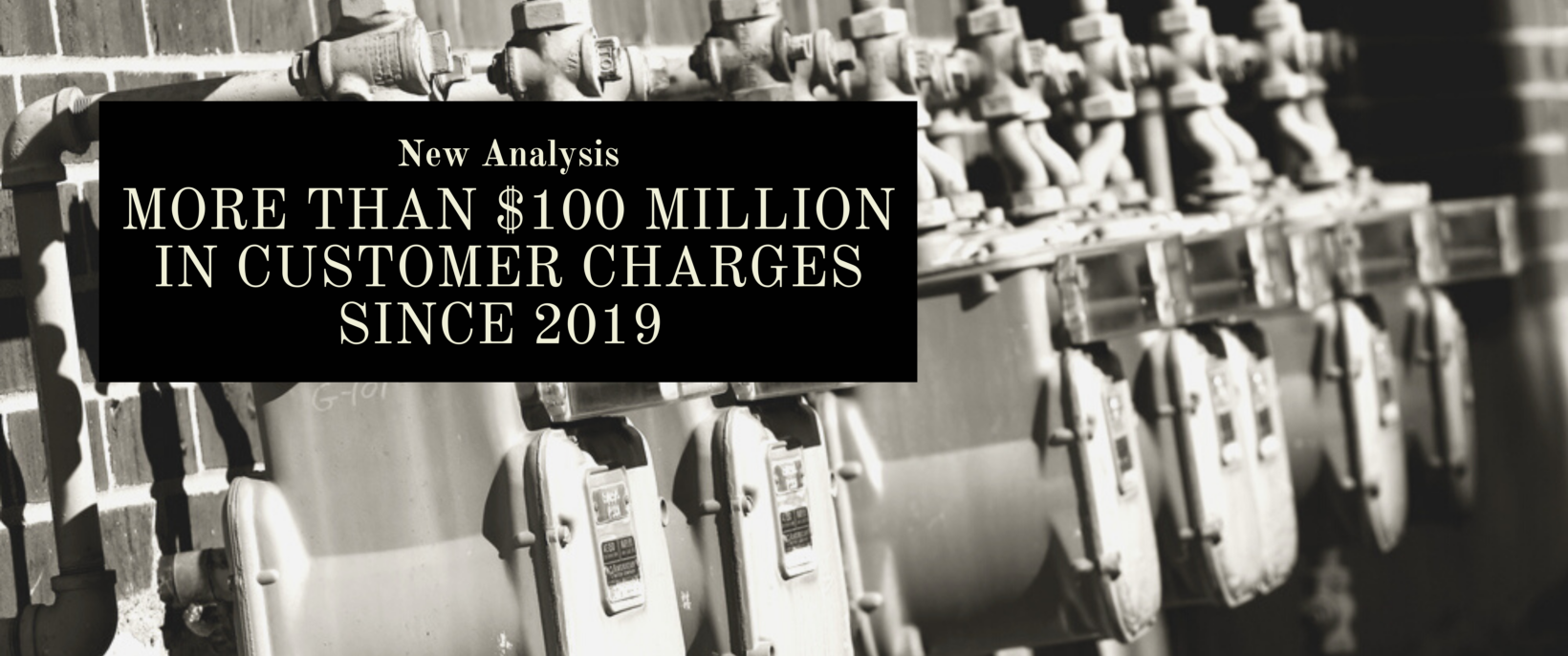Three utilities collect more than $100 million in annual GRIP charges since 2019.
The Gas Reliability Infrastructure Program, or GRIP, allows monopoly gas utilities to increase rates even if the company’s overall expenditures are declining, even if its revenues are increasing or even it the company is earning windfall profits. Under the GRIP statute, a utility need only claim it made extra capital investments and then it obtains a rate increase.
The state’s major gas utilities return repeatedly to this piecemeal process each year, increasing customer rates through it approximately 100 times since 2004.
We recently analyzed all GRIP adjustments obtained by the state’s three largest gas utilities since 2019. Our findings? These increases — 19 in the course of 18 months — added an additional $125.5 million annually to customer bills.
Regulators granted each increase as ministerial acts — that is, without input from customers or cities. Neither did regulators consider offsetting savings in the utilities’ business operations or other mitigating circumstances that could have benefitted ratepayers.
The Analysis
For this analysis we examined six GRIP increases in three different divisions for the Atmos Energy utility. These include the Mid-Tex Division that includes Dallas, Fort Worth and other areas; the West Texas Division and the Atmos Pipeline system. The GRIP cases included in this analysis are filed in Railroad Commission Dockets 10945,10944,10942,10822, 10821, and 10813
We likewise examined seven different GRIP increases in four different divisions for Houston-based CenterPoint Energy. These include divisions around Houston, South Texas, Beaumont/East Texas, and the Texas Gulf Coast. These GRIP cases can be found in Railroad Commission dockets 10949, 10948, 10947, 10836, 10835, 10834, and 10833.
We examined six GRIP filings by Texas Gas Service. These filings affected customers in five separate divisions: North Texas, West Texas, Central Texas, Gulf Coast, and Rio Grande Valley. These GRIP cases can be found in Railroad Commission dockets 10955, 10875, 10874, 10857, 10830, and 10824.
You can find all the final orders in these dockets on the Texas Railroad Commission website, found here.
The Findings
- Of the three utilities examined, Atmos Energy obtained the most additional revenue from GRIP during the analysis period. All told, Atmos received authorization to collect an additional $107.4 million from its ratepayers on an ongoing, annual basis as a result of GRIP proceedings between February 2019 and February 2020.
- Charges to Atmos customers as a result of these GRIP cases range from $2.63 per month to $4.72 per month, depending on the geographical location of the customer. However, customers throughout the Atmos Mid-Tex division will pay additional amounts because of GRIP increases ordered for the Atmos Pipeline system.
- All told, Houston-based CenterPoint will collect an additional $16.8 million from ratepayers on an ongoing, annual basis as a result of GRIP proceedings identified in this analysis. These increases were authorized between March 2019 and March 2020.
- CenterPoint increases have resulted in added charges to residential bills ranging from 62 cents to $1.55, depending on the geographical location of the customer.
- Texas Gas Service will collect an additional $1.4 million on an annual basis through ordered GRIP increases between March 2019 and March 2020. The added monthly charges from these increases ranged from 18 cents to $1.64, depending on the geographical location of the customer.
Background
Prior to the 2003 implementation of the GRIP statute, the Texas Railroad Commission typically considered utility expenditures, revenues, the prudence of investments, and other factors when setting gas rates. Because of the 2003 law, however, gas utilities now can avail themselves of pro forma GRIP increases once a year, for up to six years, with no substantial review. At the end of that period, the utility must submit to a comprehensive rate case.
Utilities defend the GRIP filings, claiming that such quick rate increases allow them to better manage their infrastructure investments. More specifically, utilities argue that the GRIP program reduces “regulatory lag,” which is that period of time between when a utility makes infrastructure investments and when it would receive reimbursement for the investments through rates.
Analysts note, however, that utilities already have a duty and incentive to make prudent infrastructure investments. Leading economists also note that some amount of regulatory lag encourages utility efficiency.
Gas utilities also claim that those ratepayers overcharged because of GRIP will recover those over payments later, when the utility undergoes a more traditional rate review. However, gas utilities typically go for at least five years without such review and in the meantime, the GRIP statute saddles ratepayers with potentially inflated rates. Determining whether utilities prudently incurred expenses during the long gap between full-blown rate cases also can be extremely difficult. Many customers likewise change service territories between traditional rate cases, which means they potentially never can be made whole after a GRIP overcharge.
You can find out more about the controversial GRIP statute and rules in a report from the Atmos Cities Steering Committee, found here.


GRIP charges appear to be a “legal” way for gas utilities to gouge their customers!